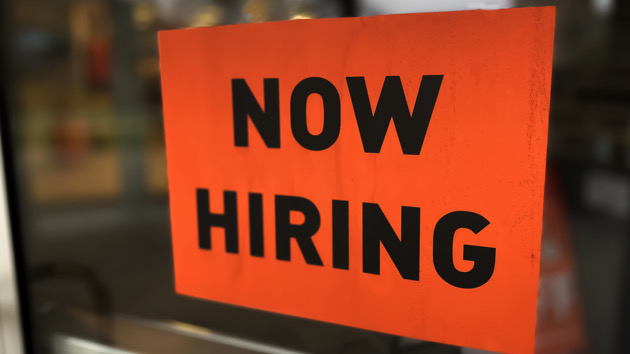
(WASHINGTON) — U.S. hiring slowed from its breakneck pace but remained robust in August, with the economy adding 315,000 jobs and the unemployment rate rising to 3.7%, according to data released by the Bureau of Labor Statistics on Friday.
The report comes one week after Fed Chair Jerome Powell triggered a stock sell-off and stoked recession fears with his vow to fight inflation with interest rate hikes “until the job is done.”
The Fed has instituted a series of aggressive borrowing cost increases in recent months as it tries to slash near-historic inflation by slowing the economy and choking off demand. But the approach risks tipping the U.S. into an economic downturn.
So far this year, however, employment has boomed. The robust hiring numbers have defied expectations and quieted fears of a major slowdown.
U.S. hiring far outpaced expectations in July, as the economy added a blockbuster 528,000 jobs and the unemployment rate fell to 3.5%, according to data released by the Bureau of Labor Statistics last month.
The jobs added in July exceeded the already-robust hiring sustained over the first half of 2022, during which the economy added an average of 461,000 jobs each month.
Government data put out this week reinforced evidence that the jobs market remains strong. Job openings rose in July after falling for three consecutive months, according to data released by the Bureau of Labor Statistics on Tuesday, which showed job openings on the last day of July had jumped to 11.2 million from 11 million the month prior.
The labor market has withstood the Fed’s effort to slow the economy, even as the central bank tries to bring down inflation in part by cutting demand for workers and slowing wage increases, AnnElizabeth Konkel, a senior economist with Indeed Hiring Lab, told ABC News.
At meetings in June and July, the central bank increased its benchmark interest rate 0.75% each time — dramatic hikes last matched in 1994.
“We aren’t seeing the employer demand get tamped down,” Konkel said. “Your interpretation of it in a macro sense depends on what hat you’re wearing.”
“If you’re a worker and see a strong labor market, that means you have choices,” she added. “You might be able to negotiate a higher wage or flexibility on work location. If you’re the Fed, it means your job just got tougher.”
Copyright © 2022, ABC Audio. All rights reserved.
